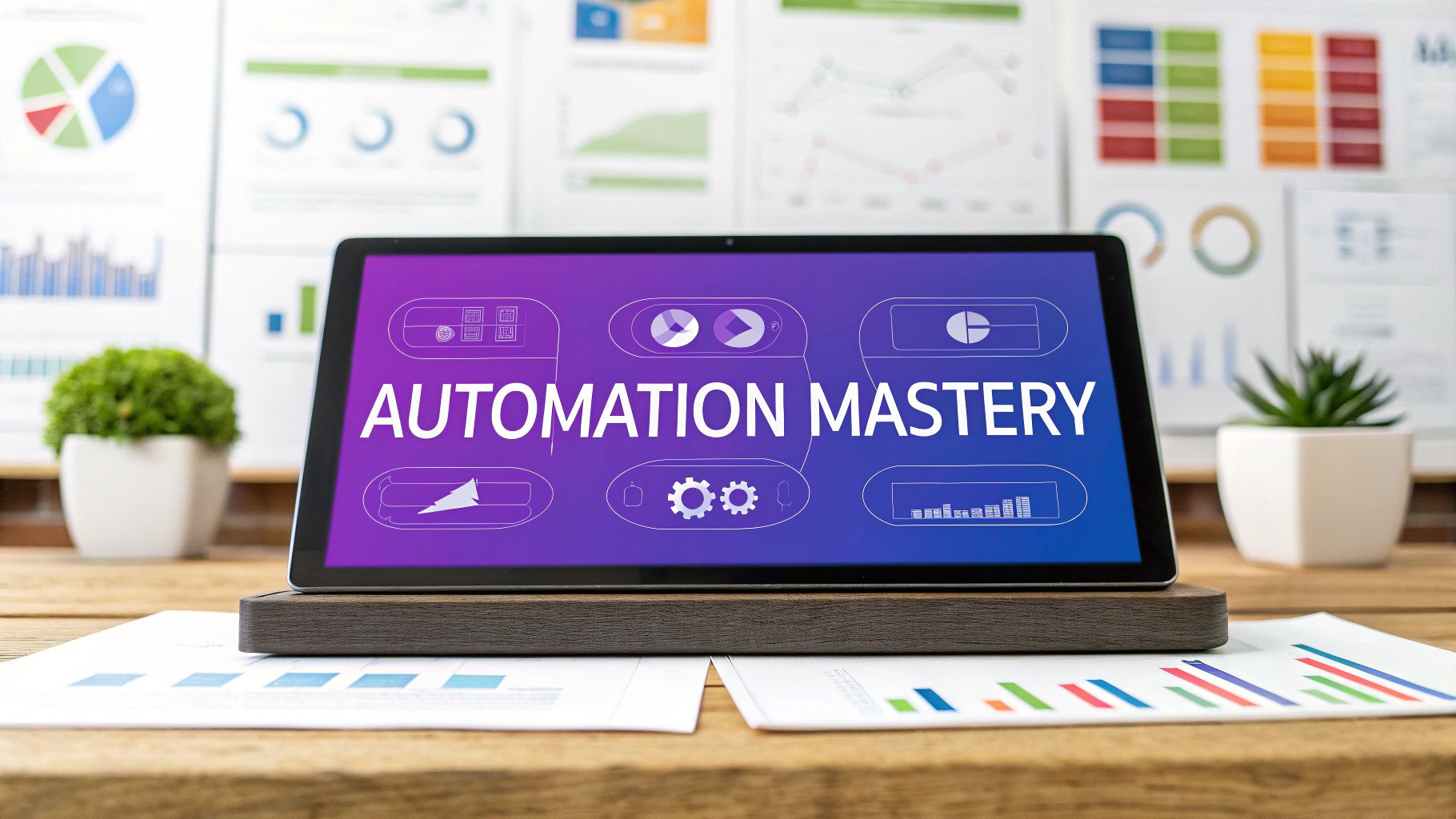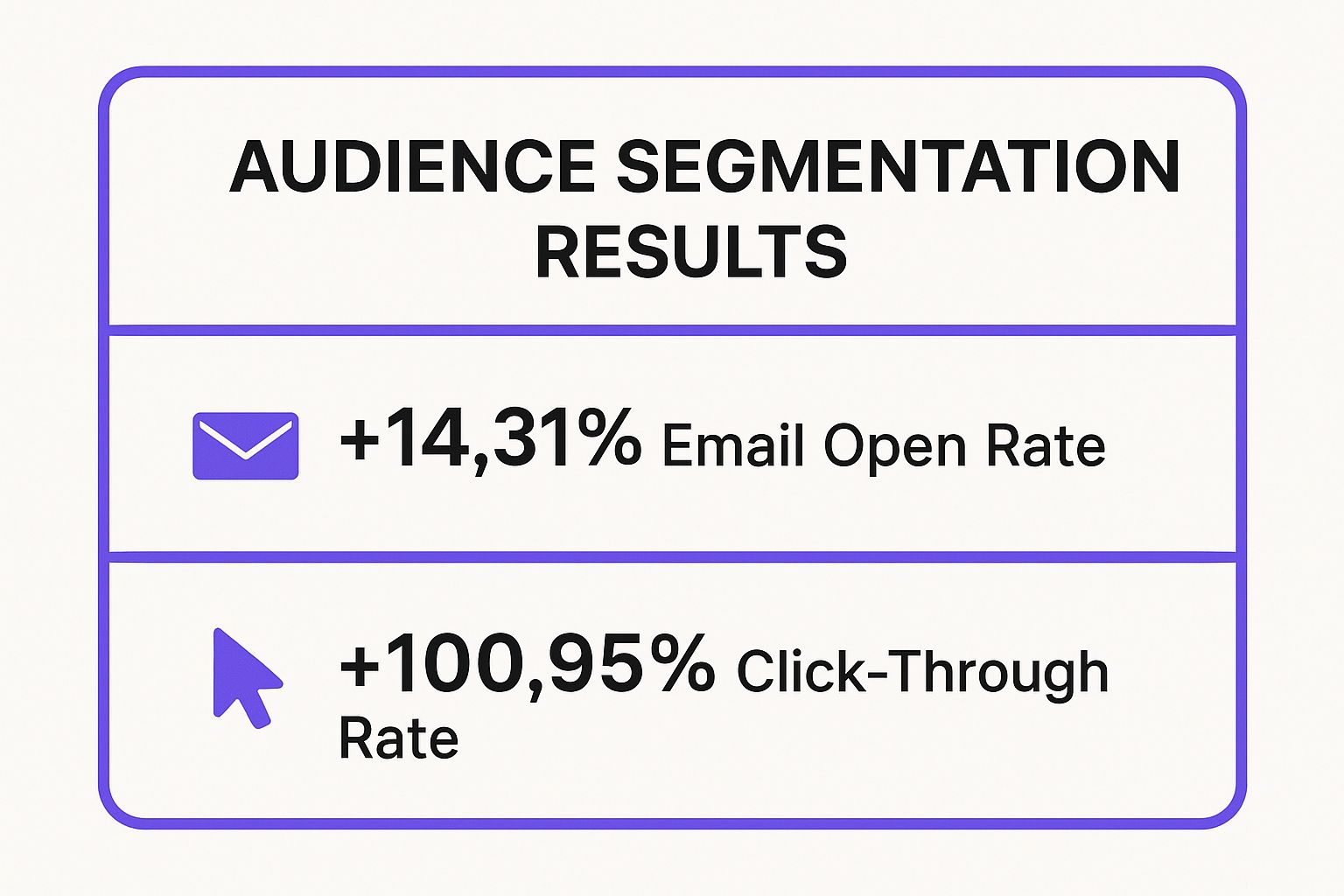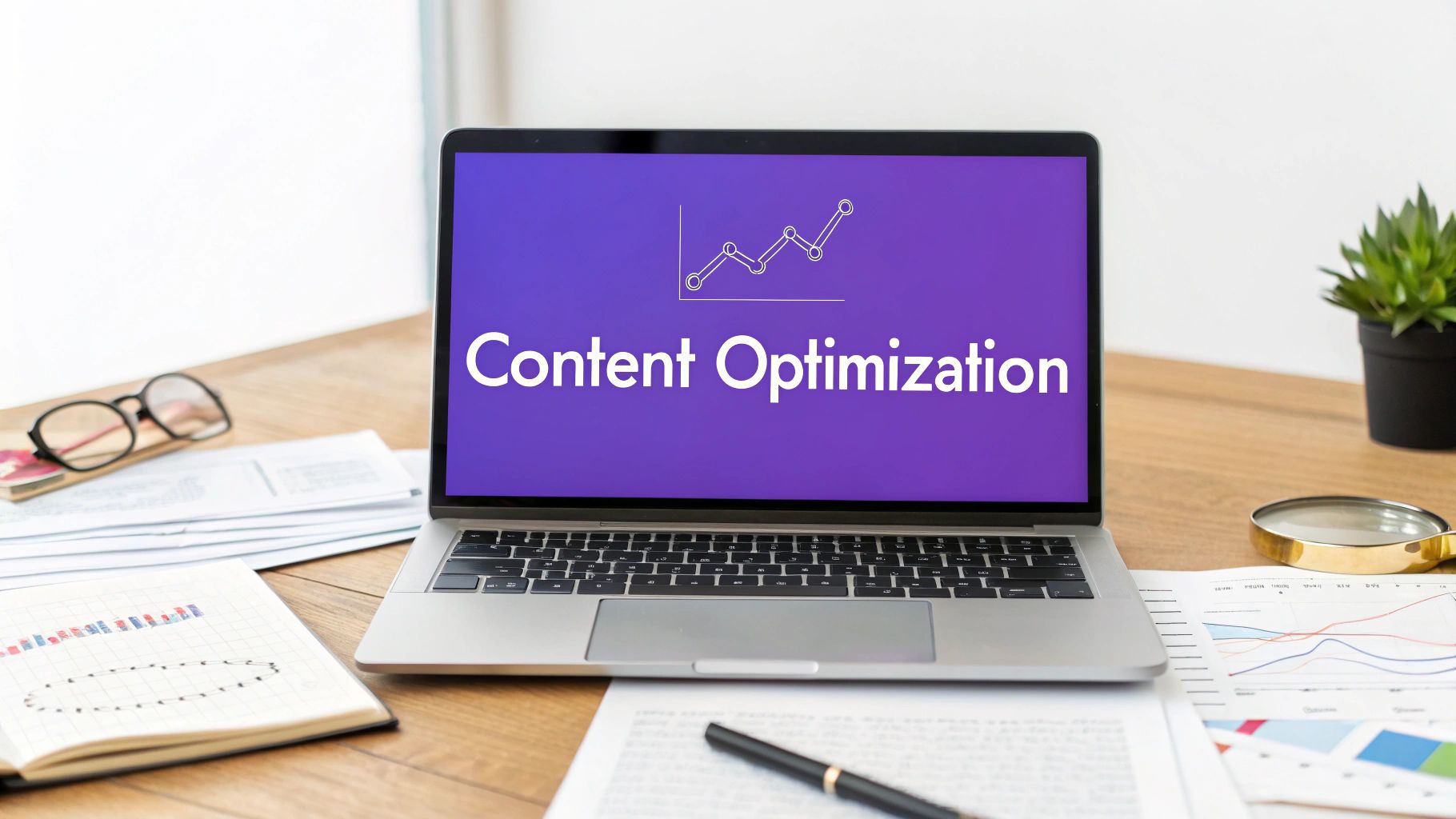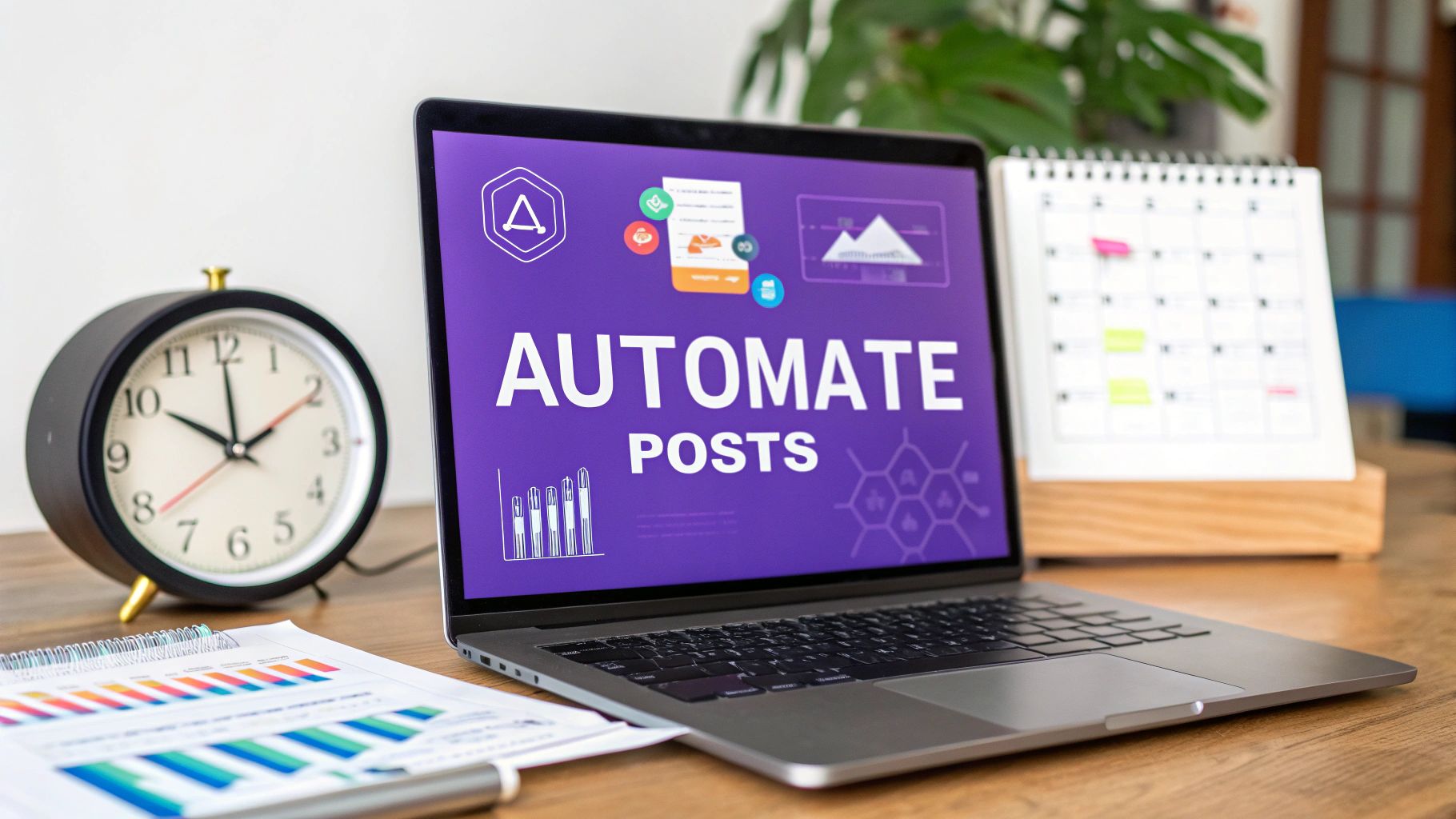9 Marketing Automation Best Practices for 2025

In 2025, 'set it and forget it' is a recipe for failure. Effective marketing automation has evolved from a simple time-saver into a sophisticated engine for hyper-personalized customer experiences and revenue growth. But with great power comes great complexity. Simply automating outdated manual processes will only accelerate poor results, leading to disengaged leads, frustrated sales teams, and wasted budget. The difference between a high-performing automation strategy and one that misses the mark lies in a set of core principles.
Adhering to proven marketing automation best practices ensures your technology works for you, not against you. This guide moves beyond generic advice to provide a strategic framework for mastering your automation efforts. To gain a comprehensive understanding of current strategies, explore these 9 Proven Marketing Automation Strategies to Use in 2025.
We will unpack nine critical practices, backed by actionable steps, to help you build a robust, scalable, and highly effective automation machine that drives measurable business outcomes. Whether you're refining an existing setup or starting from scratch, these insights will equip you to turn your automation platform into your most valuable marketing asset. Let's dive into the practices that separate the amateur from the expert.
1. Segment Your Audience for Personalized Messaging
Effective marketing automation begins with understanding that you aren't speaking to a monolith. Audience segmentation is the practice of dividing your contact database into distinct groups based on shared characteristics like demographics, online behavior, or purchase history. This foundational strategy transforms generic mass marketing into a series of personalized conversations, which is a cornerstone of any successful marketing automation best practices.
Instead of sending one email blast to everyone, you can deliver highly targeted content that resonates with specific needs. For example, Netflix segments users by viewing habits to recommend shows, while Spotify creates personalized "Discover Weekly" playlists based on listening history, significantly boosting user engagement.
How to Implement Audience Segmentation
Getting started with segmentation doesn't have to be complex. The key is to build a scalable framework that grows with your understanding of your audience.
- Start with Core Segments: Begin with 3-5 broad categories, such as new leads, active customers, and at-risk users. This prevents initial overwhelm.
- Use Progressive Profiling: Gradually collect data through forms. Ask for a name and email first, then job title on the next interaction, and company size after that. This builds detailed profiles over time without fatiguing your leads.
- Combine Data Points: Create more powerful segments by layering criteria. For instance, target "VPs of Marketing at SaaS companies with 50-200 employees who have downloaded an ebook in the last 30 days."
- Document Everything: Maintain a clear record of your segmentation strategy to ensure team-wide alignment and consistency across all campaigns.
By treating different audience members differently, you show them you understand their unique context, which dramatically increases the effectiveness of your automated campaigns.
This infographic from Campaign Monitor highlights the powerful impact of segmentation on key email marketing metrics.

The data clearly shows that sending relevant messages to targeted groups leads to a massive lift in engagement and conversions. Before you can segment, however, you must first define your ideal customer. For more guidance on this crucial first step, learn how to identify your target audience on makerbox.io.
2. Implement Lead Scoring and Grading Systems
Lead scoring is a systematic methodology for ranking prospects based on their perceived value to your organization. It assigns numerical values to leads based on their actions, engagement level, and alignment with your ideal customer profile. This approach is a critical marketing automation best practice because it helps sales and marketing prioritize their efforts, ensuring that the sales team engages with the most qualified opportunities first.
This system combines behavioral scoring (what leads do, like visiting a pricing page) with demographic grading (who they are, such as job title or industry). By automatically qualifying leads, you can send sales-ready prospects directly to your sales team while nurturing less-ready ones with targeted automated campaigns. For example, HubSpot uses a combined system where leads reaching a certain point threshold automatically trigger sales notifications, leading to significantly faster response times.

How to Implement Lead Scoring and Grading
A well-designed scoring system bridges the gap between marketing and sales, creating a unified approach to the customer journey. The key is to start simple and iterate based on real conversion data.
- Start Simple, Refine Later: Begin by defining 5-10 key scoring criteria. Avoid creating an overly complex model from the start.
- Align with Sales: Collaborate with your sales team to define what constitutes a sales-qualified lead (SQL). Agree on a specific point threshold that will trigger a handoff from marketing to sales.
- Prioritize High-Intent Actions: Assign higher scores to actions that signal strong purchase intent. For example, a demo request (15-20 points) is far more valuable than a blog post view (1-3 points).
- Implement Score Decay: To maintain an accurate pipeline, automatically reduce a lead's score for inactivity (e.g., subtract 5 points for every 30 days without engagement).
- Use Negative Scoring: Disqualify poor-fit leads by subtracting points for undesirable attributes, such as those from students, competitors, or specific email domains (e.g., @gmail.com).
By implementing a scoring system, you create an efficient, data-driven process that focuses your team's energy where it matters most.
This system ensures that your sales team isn't wasting time on unqualified prospects and that every lead receives the appropriate level of attention. To build a robust scoring model, you first need a steady stream of prospects. For more strategies on this, explore effective lead generation for small businesses on makerbox.io.
3. Create Multi-Touch Nurture Campaigns with Relevant Content
Lead nurturing is the process of building relationships with prospects who are not yet ready to buy. Instead of pushing for an immediate sale, this strategy uses automated, multi-touch campaigns to deliver valuable content that educates and builds trust over time. This approach is a core component of effective marketing automation best practices because it acknowledges that most leads require multiple touchpoints-often 7 to 13-before converting.
By systematically addressing prospect pain points and questions, you guide them through their buyer's journey. For instance, Dell generated a $40 million pipeline by delivering targeted content based on prospect behavior and industry, proving that relevant, sequential communication drives significant results.

How to Implement Multi-Touch Nurture Campaigns
Building an effective nurture campaign involves mapping content to your prospect's journey and using automation to deliver it at the right time. The goal is to be a helpful guide, not a persistent salesperson.
- Map Content to the Buyer's Journey: Align your assets with each stage. Use blog posts for Awareness, webinars for Consideration, and case studies or demos for the Decision stage.
- Use Behavioral Triggers: Branch leads into more personalized nurture streams based on their actions. If a prospect clicks a link about a specific feature, send them a follow-up email with a related case study.
- Space Your Touchpoints: Avoid overwhelming your contacts. Sending emails 3-7 days apart typically maintains momentum without causing fatigue.
- Implement Exit Criteria: Automatically remove leads from a nurture sequence once they convert (e.g., request a demo) or become disengaged. This keeps your communication relevant and your database clean.
By nurturing leads with content that directly addresses their needs at each stage, you transform cold prospects into qualified, sales-ready opportunities. This strategic patience builds brand credibility and dramatically increases conversion rates.
4. Establish Clear Goals and KPIs Before Automation
Jumping into marketing automation without a clear destination is like setting sail without a map. This crucial best practice involves defining specific, measurable objectives before you build a single workflow. This strategic foundation prevents the common pitfall of "automating chaos," where you simply speed up inefficient manual processes. Clear goals ensure automation serves strategic purposes, such as boosting conversion rates or improving lead quality, rather than just creating activity without meaningful business impact.
Organizations that succeed with automation begin with the end in mind. For instance, Cisco set a clear goal to slash its lead follow-up time using automation, ultimately increasing conversions by 25%. Similarly, Canon reduced marketing costs by 43% after setting specific automation goals around campaign efficiency and lead quality.
How to Implement Goal-Setting for Automation
Establishing a framework for your goals ensures every automated action is purposeful and contributes to larger business objectives. This process turns your automation platform into a strategic asset.
- Work Backward from Business Outcomes: Start with high-level goals like revenue growth or customer retention. Then, translate them into marketing objectives, such as generating more marketing-qualified leads (MQLs).
- Distinguish Key Metrics: Focus on business-critical metrics (qualified leads, revenue, customer lifetime value) over vanity metrics (email opens, clicks). The latter are useful for diagnostics but shouldn't be your primary measure of success.
- Establish a Baseline: Before you automate, measure your current performance. This baseline is essential for accurately quantifying the impact and ROI of your new workflows.
- Tier Your Goals: Set multiple performance levels for each KPI: a minimum acceptable result, a target goal, and an ambitious stretch goal. This provides a more nuanced view of success.
By setting clear goals, you transform your marketing automation efforts from a series of disconnected tactics into a cohesive, results-driven engine. This ensures your technology investment delivers a measurable return.
This goal-oriented approach is fundamental to tracking your success. For a deeper dive into this vital practice, learn more about measuring digital marketing effectiveness on makerbox.io.
5. Integrate Marketing Automation with CRM and Other Systems
Your marketing automation platform is powerful, but it becomes exponentially more effective when it doesn’t operate in a silo. Integrating it with your Customer Relationship Management (CRM) system and other technologies creates a unified, 360-degree view of the customer journey. This bi-directional data flow is a critical marketing automation best practice that aligns sales and marketing efforts.
Seamless integration allows marketing to track leads beyond conversion and see their direct impact on revenue. Simultaneously, it provides the sales team with a rich history of a prospect's engagement, from email opens to content downloads. For example, Thomson Reuters integrated its automation platform with Salesforce and a data warehouse, leading to predictive models that improved lead quality by a remarkable 25%.
How to Implement System Integration
Building a connected martech stack eliminates data silos and enables sophisticated, cross-channel campaigns. The goal is to create a seamless flow of information that empowers every team.
- Start with the Core: Begin by integrating your marketing automation platform with your CRM. This is the most critical connection for aligning sales and marketing.
- Map the Customer Journey: Identify every touchpoint a customer has with your brand across different systems (e.g., webinar tools, social media, analytics platforms) to pinpoint essential integration points.
- Establish Data Governance: Before syncing data, create clear rules for field ownership, naming conventions, and quality standards to prevent data chaos.
- Use Native Integrations First: Whenever possible, use pre-built, native integrations provided by your software vendors. They are generally more stable and easier to maintain than custom API connections.
By creating a connected ecosystem, you ensure that every team is working with the most accurate and comprehensive data available. When integrating, it's crucial to select a CRM that aligns with your automation needs. You can explore a detailed Pipedrive vs Infusionsoft comparison to help make an informed decision. For extending automation to your social channels, discover some of the best social media automation tools on makerbox.io.
6. Maintain Data Quality and Hygiene Practices
Your marketing automation engine is only as powerful as the fuel it runs on, and that fuel is your data. Data hygiene refers to the essential practice of regularly cleaning, standardizing, and enriching your contact database to ensure it remains accurate and reliable. Without it, even the most sophisticated marketing automation best practices will fail, leading to flawed segmentation, wasted resources, and damaged sender reputation.
Poor data quality is not just a minor inconvenience; it has significant financial implications. For instance, IBM improved its campaign ROI by 257% after implementing comprehensive data quality practices across its massive database. Similarly, Zillow maintains a 95%+ data accuracy rate through strict hygiene protocols, ensuring its automated communications reach the right real estate leads effectively.
How to Implement Data Quality and Hygiene
Establishing systematic data management is crucial for ensuring your automation operates on reliable information and delivers the intended results. A proactive approach is always more effective than a reactive cleanup.
- Implement Real-Time Verification: Use tools to validate email addresses at the point of form submission. This simple step prevents invalid or fake emails from ever entering your database.
- Schedule Regular Audits: Conduct quarterly or biannual database reviews to identify and merge duplicate contacts, remove hard bounces, and update outdated information.
- Standardize Data Entry: Create and enforce clear data entry standards for your team. Consistent formatting for names, job titles, and company information prevents fragmentation and improves segmentation accuracy.
- Use Data Enrichment Tools: Leverage services like Clearbit or ZoomInfo to automatically append missing data points to your contact records, such as company size or job function, creating a richer profile for personalization.
By making data hygiene a continuous process rather than a one-time project, you ensure your marketing automation efforts are built on a solid foundation, maximizing their effectiveness and ROI.
7. Test, Measure, and Continuously Optimize Campaigns
Marketing automation should never be a "set it and forget it" activity. The most effective strategies treat campaigns as living processes that require constant refinement. This practice involves systematically testing variables, measuring performance against key metrics, and using those insights to make data-driven improvements. It’s a core component of marketing automation best practices that separates high-performing teams from the rest.
This iterative approach transforms good automation into great automation. For example, Groove famously tested its welcome email sequence, leading to a 46% increase in user activation rates. Similarly, HubSpot’s continuous testing of CTA button colors, placement, and text improved conversion rates by 21% across its platform, demonstrating the massive potential of small, calculated changes.
How to Implement Continuous Optimization
A structured testing framework ensures your efforts produce reliable, actionable insights. The goal is to build a repeatable process for improving campaign performance over time.
- Test One Variable at a Time: To accurately measure impact, isolate what you're testing. For an email, test the subject line OR the send time, but not both simultaneously.
- Ensure a Valid Sample Size: Use an online A/B test calculator to determine how many contacts you need in your test group for the results to be statistically significant.
- Prioritize High-Impact Elements: Start by testing elements that have the biggest potential influence on results. For emails, this is typically the subject line, followed by the call-to-action (CTA) and overall layout.
- Document Everything: Maintain a log of every test that includes your hypothesis, the variables tested, the results, and key learnings. This builds an invaluable internal knowledge base.
By adopting a mindset of continuous improvement, you ensure your automated campaigns evolve with your audience, consistently driving better engagement and delivering superior business results.
8. Design for a Mobile-First Experience
With a majority of emails now opened on mobile devices and mobile internet usage far surpassing desktop, designing your campaigns with a mobile-first mindset is no longer optional. This approach involves creating emails, landing pages, and forms that are optimized for smartphones first, then adapting them for larger screens. It's a fundamental shift from traditional design that acknowledges modern user behavior and is essential for effective marketing automation best practices.
This strategy ensures that your automated communications provide a seamless and engaging experience, regardless of the device. For example, Starbucks simplified its email layouts and enlarged its calls-to-action (CTAs), leading to a significant increase in mobile conversions. Similarly, Airbnb's mobile-first email design featuring large images and single, prominent CTAs boosted mobile bookings by 30%.
How to Implement a Mobile-First Design
Adopting a mobile-first approach requires a conscious shift in your design and testing process. The goal is to eliminate friction for the on-the-go user.
- Prioritize Conciseness: Keep subject lines under 40 characters to avoid truncation on mobile screens. Use concise copy, as mobile users tend to scan rather than read in-depth.
- Embrace Single-Column Layouts: A single-column structure with a clear visual hierarchy is the easiest for users to scroll through on a narrow screen.
- Make CTAs Thumb-Friendly: Design buttons to be at least 44x44 pixels with ample white space around them, making them easy to tap accurately with a thumb.
- Optimize for Performance: Compress images to ensure fast load times, even on slower mobile networks. Use larger, readable font sizes, with a minimum of 14px for body text.
- Test on Real Devices: Don’t just rely on desktop preview tools. Test every email and landing page on actual iOS and Android devices to catch rendering issues and ensure a flawless user experience.
By building your campaigns for the smallest screen first, you guarantee that your message is clear, accessible, and effective for the largest segment of your audience.
9. Respect Privacy, Consent, and Compliance Requirements
In an era of increasing data privacy regulations and consumer awareness, treating customer data with respect is no longer optional. Adhering to laws like GDPR, CCPA, and CAN-SPAM is a foundational marketing automation best practice that is both a legal necessity and a critical trust-building exercise. This means obtaining clear consent, being transparent about data usage, and honoring opt-out requests immediately.
Failing to prioritize compliance can have severe consequences. For instance, British Airways was fined £20 million for GDPR violations after a data breach, highlighting the immense financial and reputational risks. Properly managing consent and privacy within your automation workflows protects your business and shows customers you value their trust, strengthening long-term relationships.
How to Implement a Compliance-First Approach
Integrating compliance into your automation strategy requires a proactive and systematic approach. It's about building privacy into the design of every campaign from the start.
- Implement Double Opt-In: Use a two-step confirmation process for email subscriptions. This ensures you have explicit, verifiable consent from engaged users and significantly reduces spam complaints.
- Provide Clear Opt-Outs: Make your unsubscribe links prominent in every email. Process these requests instantly and automatically to comply with regulations like CAN-SPAM, which requires action within 10 business days.
- Offer Preference Centers: Instead of a simple unsubscribe, direct users to a preference center where they can choose the topics and frequency of communications. This retains subscribers who are still interested but want more control.
- Maintain Detailed Consent Records: Keep a secure log of how and when consent was obtained for each contact. This record should include the timestamp, source, and the exact consent language presented to the user.
- Conduct Regular Audits: Proactively review your database and workflows at least quarterly to ensure ongoing compliance. This includes deleting data you no longer need according to your data retention policies.
By building your marketing automation on a foundation of respect for user privacy, you not only avoid legal penalties but also cultivate a more loyal and engaged audience.
Marketing Automation Best Practices Comparison
| Strategy | Implementation Complexity 🔄 | Resource Requirements ⚡ | Expected Outcomes 📊 | Ideal Use Cases 💡 | Key Advantages ⭐ |
|---|---|---|---|---|---|
| Segment Your Audience for Personalized Messaging | Medium to High – requires data infrastructure and ongoing maintenance | Moderate to High – data collection, CRM/tools integration | Higher engagement (+14.31% opens, +100.95% CTR), improved conversions | Campaigns needing personalized communication and targeting | Greatly improves engagement and conversion; targeted messaging; better resource allocation |
| Implement Lead Scoring and Grading Systems | High – needs historical data, model calibration, and regular tuning | Moderate to High – analytics, CRM integration, data analysis | Prioritized leads, 20-30% increased sales productivity, 30% conversion improvement | Sales and marketing teams requiring lead prioritization | Increases efficiency; aligns sales & marketing; automates lead routing |
| Create Multi-Touch Nurture Campaigns with Relevant Content | Medium to High – content creation and marketing automation setup | High – content development, automation tools, multi-channel management | More sales-ready leads (50% increase), better brand trust and engagement | Complex buyer journeys requiring relationship building | Builds trust; educates leads; increases lead quality and engagement |
| Establish Clear Goals and KPIs Before Automation | Low to Medium – strategic planning and alignment across teams | Low to Medium – time investment, analytics tools setup | Clear success metrics, better ROI tracking, avoids wasted effort | Any automation initiative needing measurable impact | Enables data-driven decisions; aligns teams; ensures ROI focus |
| Integrate Marketing Automation with CRM and Other Systems | High – technical integration, API management, data governance | High – developer/consulting resources, maintenance | Unified customer data, closed-loop reporting, better sales follow-up | Organizations using multiple systems needing connected data | Eliminates manual work; provides comprehensive insights; improves alignment |
| Maintain Data Quality and Hygiene Practices | Medium to High – ongoing audits, enrichment, and compliance | Moderate to High – dedicated resources and tools | Improved deliverability, better targeting, compliance | All data-driven marketing relying on accurate contact data | Reduces errors and costs; ensures compliance; increases campaign effectiveness |
| Test, Measure, and Continuously Optimize Campaigns | Medium – requires analytical skills and testing infrastructure | Moderate – testing platforms, analytics, time investment | Incremental performance gains (20-30%), better personalization | Campaigns needing ongoing improvement and validation | Provides data insights; improves ROI; keeps campaigns relevant |
| Design for Mobile-First Experience | Medium – design and development with extensive testing | Moderate – design resources, device testing tools | Increased mobile engagement (+15% CTR), reduced unsubscribes | Email and landing page campaigns with mobile-heavy audience | Enhances user experience; future-proofs campaigns; improves conversions |
| Respect Privacy, Consent, and Compliance Requirements | Medium to High – policy implementation and ongoing monitoring | Moderate to High – compliance experts, tools, training | Avoids fines, builds trust, higher database quality | All marketing programs handling personal data | Ensures legal compliance; builds brand trust; improves data quality |
Beyond Automation: Building a Smarter Marketing Engine
The journey through marketing automation best practices reveals a fundamental truth: technology is only as powerful as the strategy behind it. Simply "turning on" automation isn't a silver bullet. True success comes from thoughtfully applying the principles we've covered, transforming your marketing from a series of manual tasks into a cohesive, intelligent, and customer-centric engine.
By implementing granular audience segmentation and dynamic lead scoring, you move beyond generic broadcasts to deliver personalized conversations at scale. You are no longer just sending emails; you are guiding individual prospects through a journey with multi-touch nurture campaigns that provide the right content at the right time. This strategic approach, grounded in the practice of establishing clear goals and KPIs from the outset, ensures every automated action has a purpose.
From Disconnected Tools to a Unified System
One of the most critical takeaways is the power of integration. When your marketing automation platform seamlessly communicates with your CRM and other essential systems, you create a single source of truth about your customers. This unified view, maintained through rigorous data hygiene, is the foundation for every other best practice. It fuels accurate personalization, enables precise measurement, and ensures your teams are working with reliable information.
Furthermore, a commitment to continuous improvement is non-negotiable. The principles of A/B testing, campaign measurement, and ongoing optimization are not one-time tasks; they are part of a cyclical process that refines your strategy over time. Each test provides valuable insights, helping you understand what truly resonates with your audience, from subject lines to call-to-action button colors, all while ensuring a flawless mobile-first experience.
The Human Element in an Automated World
Ultimately, mastering marketing automation is about building better relationships. By respecting privacy, consent, and compliance, you earn your audience's trust, which is the most valuable asset you have. Automation should feel helpful and timely, not intrusive or robotic. The goal is not to replace human connection but to enhance it, freeing up your team to focus on high-value strategic work while the system handles the repetitive, data-driven tasks.
Embracing these marketing automation best practices elevates your role from a simple tactician to a strategic architect. You are no longer just executing campaigns; you are designing a scalable, predictable, and powerful system that drives revenue and fosters lasting customer loyalty. This is the true promise of automation: not just doing more, but achieving more with intelligence and purpose.
Ready to apply these automation principles to your social media presence? MakerBox helps you automate content creation, scheduling, and performance tracking, turning your social strategy into a high-performing engine. Start building your automated social media powerhouse today at MakerBox.





